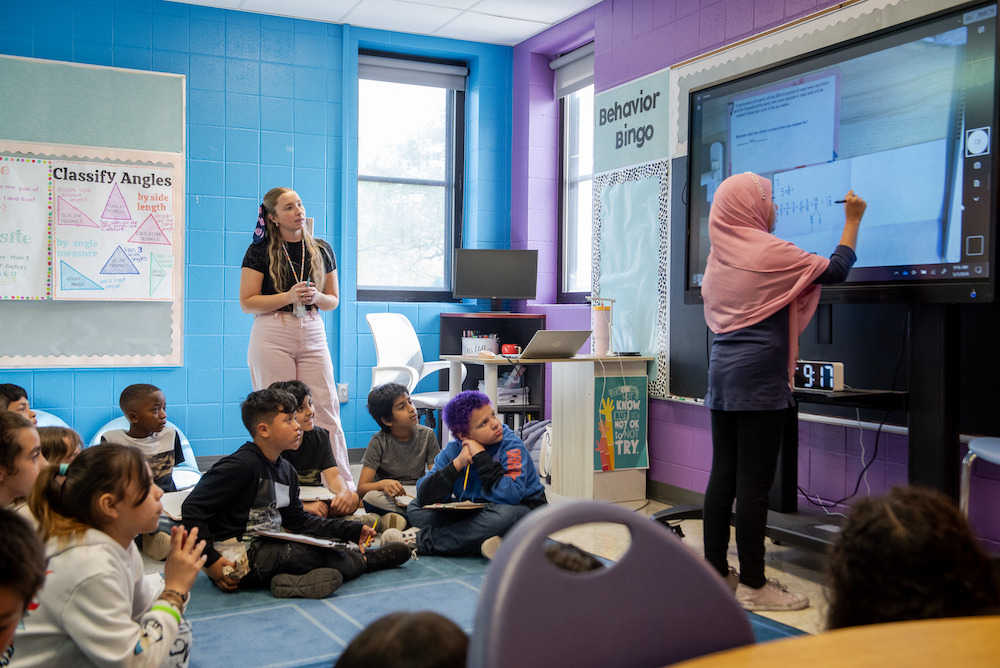
Addressing Unfinished Learning: Pause to Accelerate
In July 2021, we released the Addressing Unfinished Learning Toolkit for school leaders working to support teachers in prioritizing content and providing targeted support for students’ unfinished learning needs. The 2021 toolkit was grounded in principles we found to be true for addressing unfinished learning during the 2020–21 school year:
- Tier 1 instruction is the primary lever for accelerating learning outcomes.
- Addressing unfinished learning while moving forward requires teachers to spend more time on priority units, not less.
- The way to address unfinished learning is content-specific—in other words, it depends on what you are trying to teach.
- Leaders need support both helping teachers develop new skills and setting up a strong academic strategy.
Throughout our work alongside school leaders in the 2021–22 school year, we found that the four grounding principles of the Addressing Unfinished Learning Toolkit still hold true. However, in putting the strategies into practice, the importance of another crucial factor emerged: pausing. Working alongside our partners, we found that addressing unfinished learning is a continuous improvement process—it’s not just a matter of planning at the year, unit, or lesson levels. Leaders must respond to students’ demonstrated needs (many of which, as any educator can attest, can not be predicted in advance) by budgeting time throughout the year to pause and realign plans based on where students actually are.
We know that time is the most precious resource for educators—pausing can feel like luxury if not downright impossible. However, prioritizing time to pause this summer and to continuously reflect and improve throughout the school year can help prevent those moments of mid-year panic when you feel overwhelmed, realize you are behind where their pacing guide says you ought to be, and worry you won’t be able to cover all the standards in the remaining instructional days.
Whether you are working on a classroom, school, or district level, we encourage you to pause this summer to:
- Reflect on what worked in your academic strategy last year and what needs to be adjusted to support all students’ learning needs.
- Think about how to develop a pacing guide for this year that aligns to your content scope and sequence.
As you pause, consider:
- How many teaching days will I realistically have this year?
- Is there a pacing calendar that the grade-level team can work from to ensure that we cover the major work of each unit? How does that impact the lessons we plan to teach?
- How do I strategically think about flex days now in order to support unfinished learning?
- Reviewing guidance from the curriculum authors, how can I make the most important grade-level standards fit into my instructional days?
In the 2022 Addressing Unfinished Learning Toolkit, you will find new resources to support you as you pause, including new tools for annual planning, new templates, and new criteria for prioritizing content:
- The updated ELA guidance and tools will support you on which texts you are prioritizing and your criteria for success, including ensuring that students are engaging with diverse authors and perspectives across texts. and guiding you through pausing and reflecting on how to make the most of your flex time.
- The updated math guidance and tools will provide guidance to support annual math planning, so that you can plan flex time throughout the year—a critical step before unit and lesson prioritization. Additionally, you can use the year-long guidance and prioritization tool to help you stay responsive to your students’ needs by building in time throughout the year to pause and realign the pacing calendar based on where your students are.
We know that there is no “average student.”* Every student is unique and possesses individual strengths and learning needs, and there isn’t a quick, easy, one-time method to assess each of those strengths and needs and plan the rest of the year out accordingly. Reaching every student—building on their strengths, meeting their needs—requires ongoing thoughtful reflection and adjustment. This toolkit is designed to help educators do just that, offering resources that will help you take targeted action to continuously monitor and improve strategies to address unfinished learning and guidance on pausing to reflect on students’ progress so that you can reach every student you serve.


